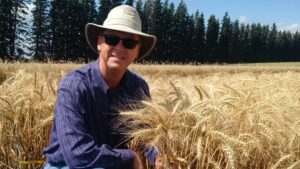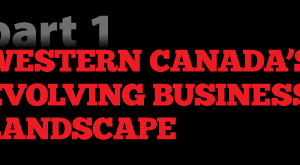With changes looming for the Canadian Wheat Board, the impact on the Western Grains Research Foundation may seem inconsequential. However, the WGRF faces some changes if it is going to continue raising funds and making waves in the world of wheat breeding.
Just like its name implies, the Western Grains Research Foundation was created to kick-start innovation in the grains sector in Western Canada. The WGRF manages an Endowment Fund, as well as the wheat and barley check-off funds. Each of these three funds are distinct, both in the way money is obtained and used.
The WGRF has been putting almost $5 million a year into breeding research—$4 million for wheat and $750,000 for barley. In the context of global breeding budgets in excess of $1 billion a year for the largest seed companies, the WGRF’s investment is small by comparison. In Canada specifically, total investment in wheat research is estimated at $20 million, of this $4 million comes from the WGRF and the remainder is primarily Agriculture and Agri-Food Canada.
Performance is paramount because cereal research has lagged behind most other crop types. Not only do they deliver half the return on investment of other crops such as canola and soybeans, but cereals are also lagging behind projected demand. Global wheat production is increasing at only 0.9 per cent each year while global demand is growing at 1.5 per cent or more annually. Wheat production needs to rise 1.6 per cent each year to reach required global production levels by 2020.
Given the importance of cereals to Canada, and especially the west, this gap has got to close. “Collectively, we must address this growing gap in innovation,” said Jay Bradshaw in a recent speech to the Canadian Seed Growers’ Association. “To do this, we will need new approaches to innovation. It starts with more funding, but it also means new partnerships and creative new ways of working together.”
Bradshaw’s is only one of many voices calling for improvements to the approaches on cereals research. Funding is the front line and WGRF is one of the highest profile mechanisms to achieve improved cereal research in Canada. However, the very mechanism for its funding is now in question with the potential changes to the Canadian Wheat Board.
The How
Currently, the CWB collects check-offs from the final payments to farmers on behalf of the WGRF. “With a change in the marketing role of the CWB, the CWB will no longer be in a position to be the sole collector of the WGRF check-offs. In order to continue a check-off for wheat and barley, an alternative check-off collection system will be needed,” explains Keith Degenhardt, chairman of the WGRF board. “The CWB check-off system has worked efficiently for 17 years, but it is by no means the only check-off model available.” One of the most likely solutions is to collect money through the private grain companies when they receive deliveries.
Consultations are already underway with the government, agricultural organizations and other stakeholders to help ensure that a new system is ready for August 2012. Such consultations are also exploring the rate and scope of the check-off. The WGRF is hoping this change can provide a new impetus for its operations.
On What
Even before all the CWB discussions started, the WGRF was interested in broadening its research check-off. As it stated in 2009, “With the growing use of barley for the domestic livestock industry and with the growing use of wheat for the production of ethanol, the research check-off is leaving out a growing percentage of western Canadian wheat and barley production. Presently the WGRF is stretching the check-off dollars collected on export grains to fund research for domestic industrial uses such as ethanol, as well as for our livestock industries. To adequately fund plant breeding for those uses, we need to collect a check-off on those uses.”
For What
The WGRF is the beneficiary, under the Canada Transportation Act, of funds that were deemed to be in excess of the set revenue cap of the Canadian railways. Excess funds, plus a penalty of 15 per cent, are transferred into the WGRF’s Endowment Fund. In 2007-08, a railway payment of $67 million into the endowment fund caught the attention of the entire farming sector. This large, one-time increase in resources available to its endowment fund has significantly increased the funds available to WGRF to support research in the coming years.
WGRF is taking a more proactive approach to allocating these funds. While in the past, funds were allocated by the Letter of Intent process, i.e. “ask and ye may receive,” the new Directed Research Program was established to fund specific recommended research. Requests for proposals are issued, inviting researchers to submit research proposals. “We look forward to major accomplishments in terms of supporting activities in areas such as agronomy research, post-harvest handling issues, new crops and crop uses, breeding tools, pest and weather surveillance and dealing with various crop mycotoxins,” says Degenhardt.
With Whom
The seed industry has an intimate interest in the outcomes of changes and policies at the WGRF. For companies such as SeCan, FarmPure, Canterra and others, access to some of these varieties is essential. Support for public cereal breeding programs creates varieties that are tendered to seed companies to multiply, manage and market. “The priority of the seed industry is to transfer new technology from the scientist to the farmer. The Canadian Seed Growers’ Association has spent more than a hundred years developing reliable processes to do that. We hope that the WGRF will draw on that experience as they go forward,” says CSGA representative to the WGRF, Joe Rennick.
For many companies engaged in wheat research globally, the way in which the WGRF engages in collaborative processes is equally important. “Access to wheat germplasm and a collaborative spirit would bring private sector investment in wheat breeding to Canada. Recent months have seen significant investment into wheat germplasm and technology by the private sector in many key wheat producing countries, notably with the exception of Canada,” says Garth Hodges of Bayer CropScience. “The WGRF could add a new dimension to its mandate—leverage current Canadian assets to ensure long-term sustainable competitiveness of Canadian wheat growers by encouraging private investment.”
It’s a goal the WGRF recognizes as well. “I believe an important long-term challenge and opportunity for the WGRF is to enhance producer involvement in agriculture research while securing investments from other players as well,” adds Garth Patterson, the new executive director of the WGRF.
The WGRF is considered a small player in cereal research—one of the most important actors in cereals research remains AAFC. “At various points—in various ways—we have explored many partnerships,” says Syngenta’s Bradshaw. “In all cases, I think we remain challenged by the question of under-valuing commercialization. The ability to take a piece of science, add value through insertion into genetics, modification for the marketplace, capacity to handle regulatory approvals and related responsibilities, all need to be considered. And that is before you consider the incredible cost of bringing a product to the marketplace for farmers,” he adds.
For the WGRF, AAFC, academia and the private sector to be successful in improving wheat, a new range of collaborative approaches is needed. Success starts with finding new ways to collect the check-off, but that is just a drop in the bucket. It may mean extending the family of interests who are paying for research, and the partners who do that research. It is time to make waves for wheat and these few initial drops may have some important ripple effects.
Julie McNabb












